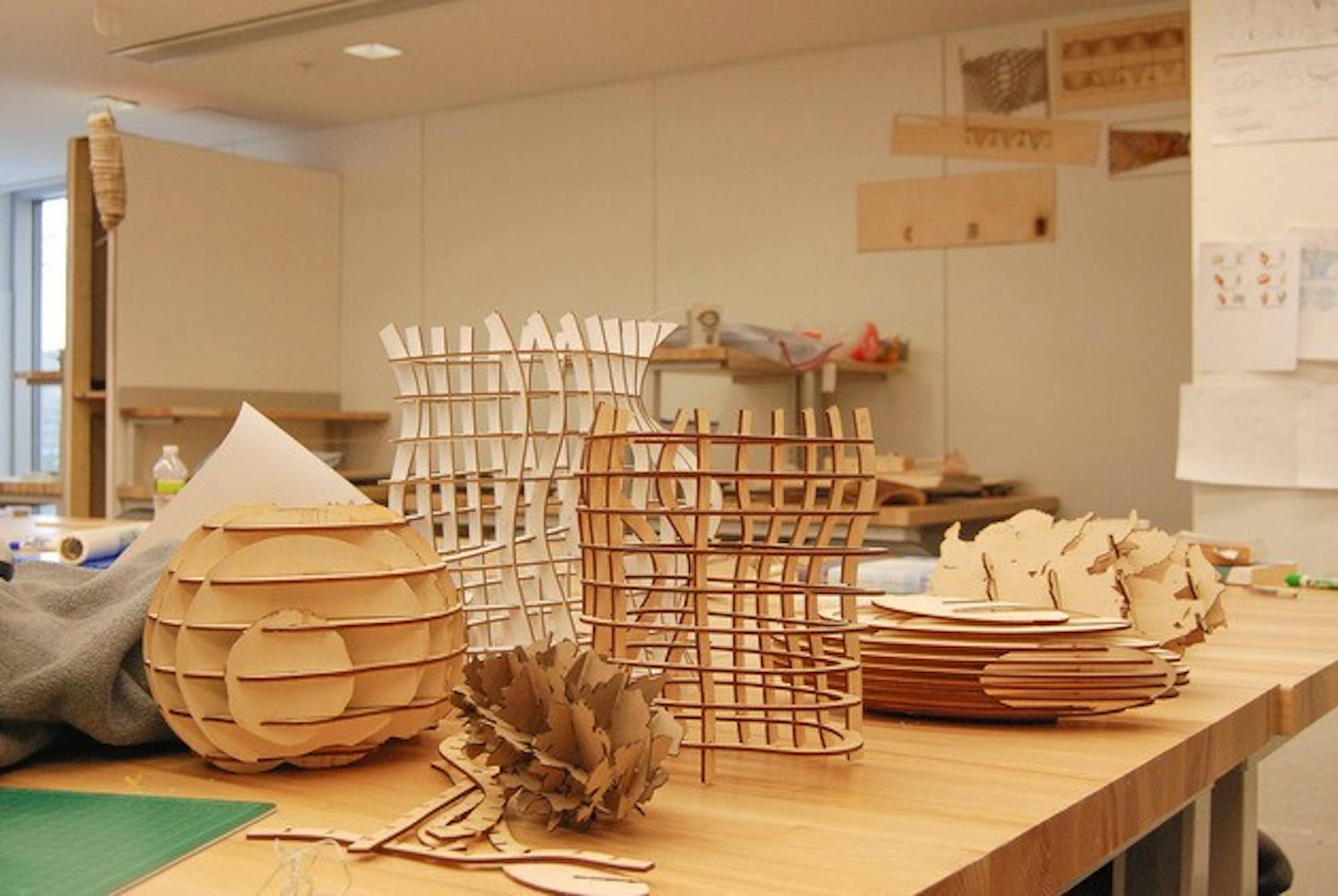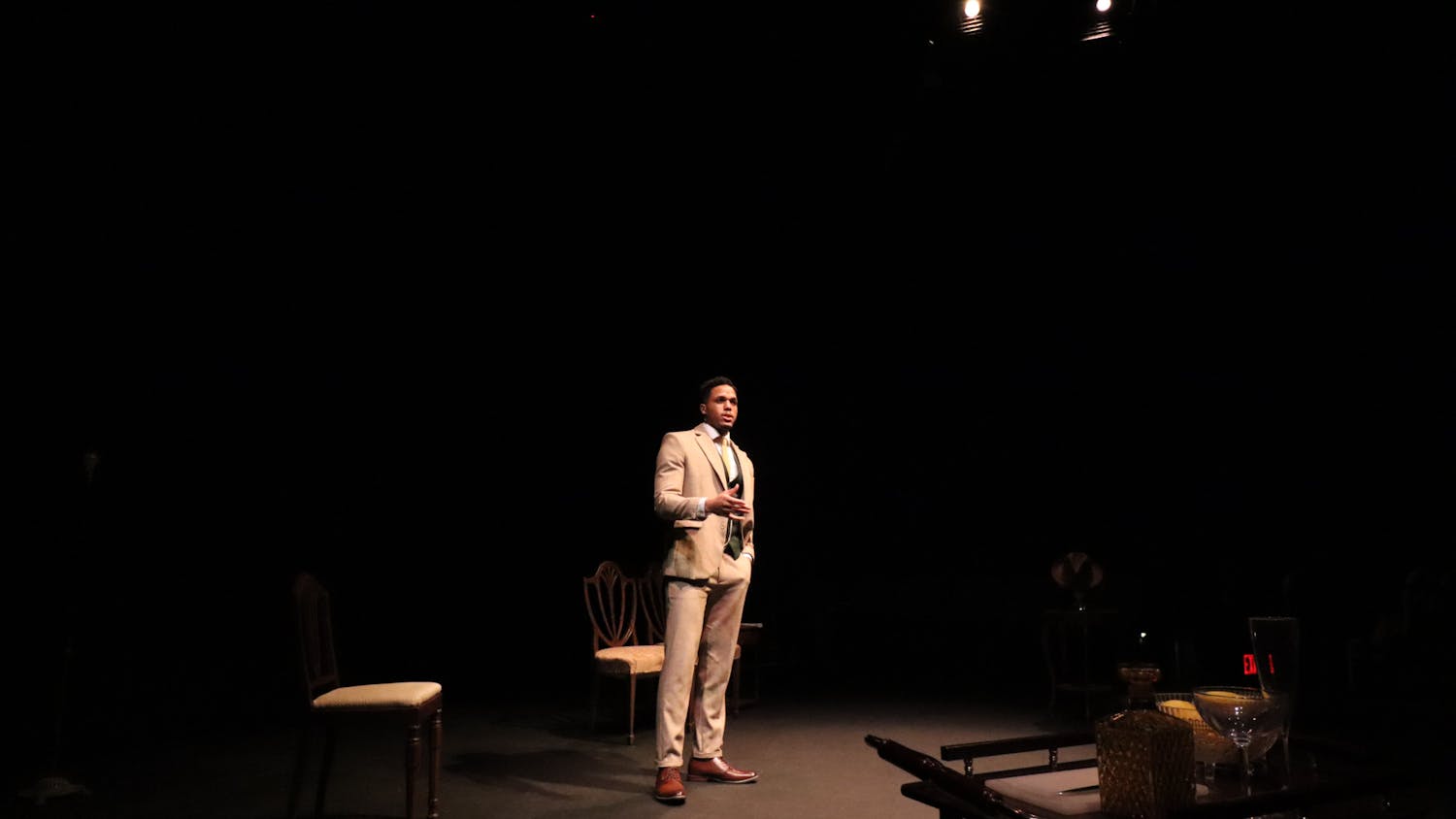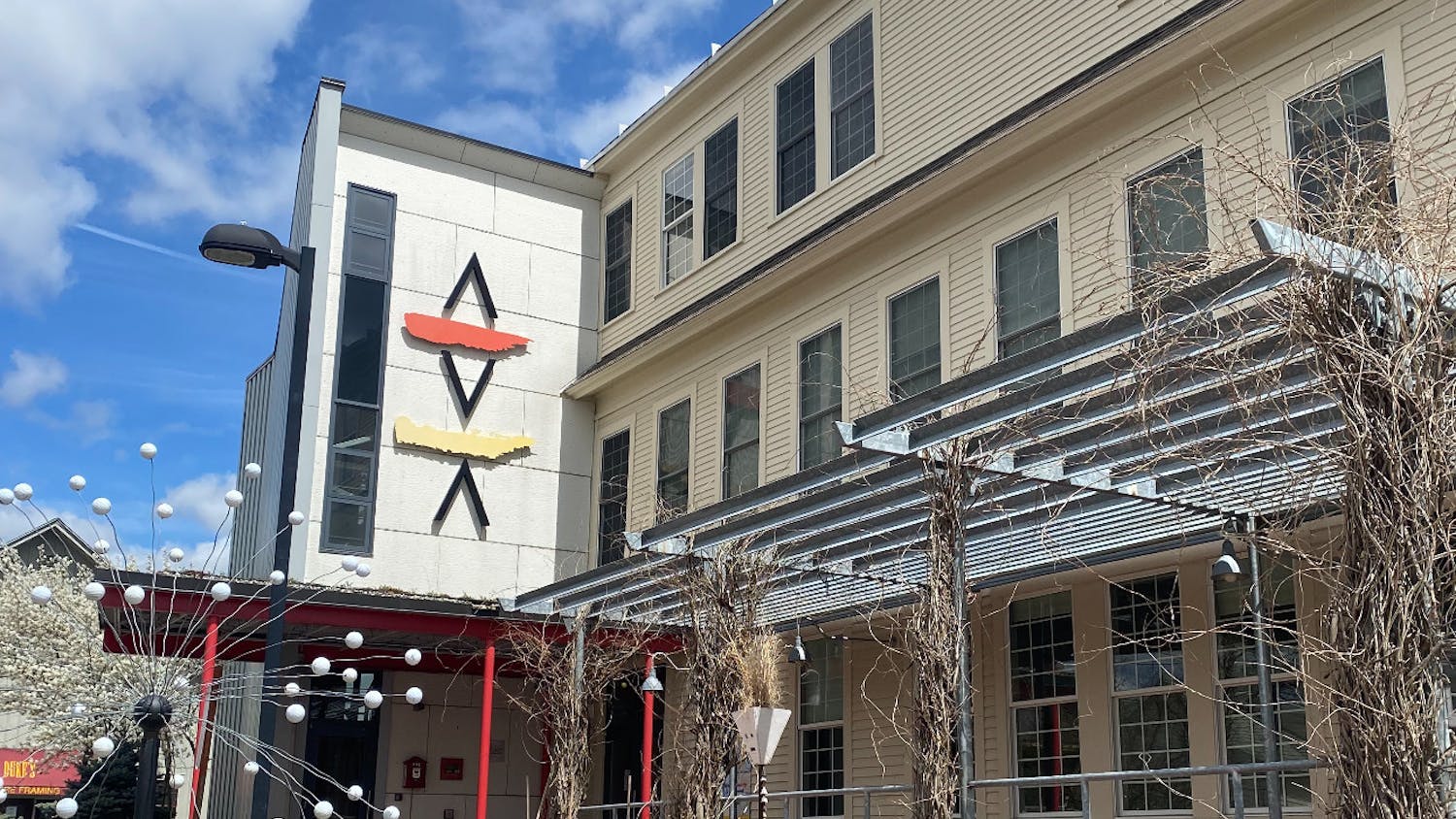Melinda Agron '14, a studio art major concentrating in architecture, long knew she would most likely pursue a career in architecture upon arriving at the College. Agron said she enjoys the flexibility that a liberal arts education offers as compared to a structured bachelor of architecture program, because it has helped develop other skills and interests that can be applied to her architectural studies.
"I really appreciate that here I can try a lot of different things and I have much more freedom than if I were in a more focused program," Agron said.
While Dartmouth does not offer a formal major in architecture, the College offers various resources for students interested in the field that incorporates both the study of design and art. The studio art department offers a three-term sequence in architecture, and the art history, engineering, history, geography and environmental studies departments also offer architecture-related coursework.
Mingyu Kim '14, a studio art major concentrating in sculpture, said he appreciates the breadth that Dartmouth's liberal arts curriculum provides.
Architecture students with an interest in government, for example, can focus on the public sector and real estate development, while those with a passion for sustainability can study architecture's environmental impact.
"Being an architect ensues a lot of understanding, of your clients, the sites, the programs and various other conditions," Kim said. "The liberal arts education broadens the horizons of one's understanding."
Tom Bonamici '07, who majored in geography modified with studio art, pursued architecture at Dartmouth through his coursework and extracurricular activities. During his senior year, Bonamici completed an independent study in which he designed a new workshop space for the Dartmouth Outing Club at Oak Hill. He also built a sugarhouse, a shelter and outhouses for Cabin and Trail.
"It was nice to have a professional undertaking," he said. "I had real clients and was able to bounce ideas off of them."
While he ultimately ended up pursuing a career in industrial design rather than architecture, Bonamici said his undergraduate focus on architecture applies to any kind of design career.
"Having a really wide range of classes was helpful in gaining a broader perspective and in thinking about how literature and music and all these different themes can come together and influence three-dimensional design," Bonamici said.
Studio art professor Jack Wilson, who has worked for the College's planning and design office for 25 years, agreed that a liberal arts education is the best education for a budding architect.
"Architects are real generalists," he said. "They have to know about a lot of different kinds of things in order to practice architecture."
Wilson, who teaches courses in drawing and architectural design as well as a class in integrated design at the Thayer School of Engineering, said a balanced liberal arts curriculum provides a strong foundation in an unpredictable world.
"You become superbly adaptable and responsive and that's the most you can ask for from an education," he said.
Studio art professor Karolina Kawiaka said her classes introduce students to a wide spectrum of design work that architects deal with, from designing buildings to landscapes to objects.
"The architecture classes build on the students' work with drawing, sculpture, printmaking, painting and photography, so the students get a very grounded fine arts education while they are at Dartmouth," she said.
A strong liberal arts background enriches undergraduate architectural studies and prepares students for premiere masters of architecture programs in the future, Kawiaka said.
"The strength of students is that they study other disciplines so they are coming to it with a knowledge of history, maybe engineering or sociology, and many other fields in the liberal arts," she said. "They have a broader approach to design rather than coming from a narrow and maybe technical approach that focuses only on architecture."
The skills students acquire as part of a liberal arts education also serve them well as practicing architects.
"They're good writers, they're good at running businesses, and they're very articulate," she said.
Kawiaka, along with Sue Reed '81 and art history professor Marlene Heck, founded Dartmouth Alumni in Design and Architecture to connect students with graduates for advice on working in the architecture field and applying for graduate school.
Dartmouth has more than 1,100 alumni who are architects. The alumni network is a "good connector and way for people to network" since its creation, said Kawiaka, the group's faculty advisor.
Kim is the president of Architecture at Dartmouth, a student organization closely linked to alumni in the architecture field, especially those who are part of the alumni group. Alumuni periodically come to Dartmouth to talk to students about their own professional experiences.
During big weekends, students and members of the alumni group often join together for Pecha Kucha, an informal gathering where individuals exchange ideas on past and present art projects. Architecture at Dartmouth also arranges field trips to local companies, architects' offices and galleries for exhibition.
"I find being involved with [Architecture at Dartmouth] extremely beneficial because when I participate in talks or have meetings with alumni or architects from outside, it becomes very intimate and they get to know you better," Kim said. "I get to learn so much from such a short duration of time."
Emily Yen '10, a first year student in the Rhode Island School of Design's masters of architecture program, said that attending Dartmouth allowed her to pursue opportunities outside of architecture, including learning to whitewater kayak, volunteering in the Amazon and spending an off-term in Ecuador.
Had Yen completed a bachelor's of architecture at RISD, she said she believes her undergraduate experience would have instead been dominated by time spent in the architecture studio.
"I graduated from Dartmouth as not the greatest architect, artist or engineer, but as a well-rounded person who is prepared to approach difficulties, leadership positions and Rubik's Cube problem solving and manage my time and enjoyment," she said.
Yen, who majored in studio art and minored in engineering at the College, took courses in both disciplines before determining that a studio art major with a concentration in architecture would best help her create a portfolio for graduate school and build a solid foundation in conceptual problem-solving.
Seeing the world through a liberal arts lens has helped keep Yen open-minded, even after graduation.
"To me, architecture is, in a way, the definition of liberal arts; everything feeds into another," she said. "The more information and resources you can tap into, the stronger the concept."




